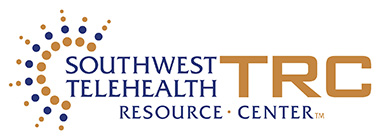
The Centers for Medicare & Medicaid Services’ (CMS) “Rural Health Transformation Program (RHTP),” notice of funding opportunity (NOFO), published September 15, 2025, provides States with an historic funding opportunity that seeks to help them transform healthcare delivery for their rural residents. Each state can separately apply for a portion of $25 billion dollars of “Workload Funding” which is in addition to $25 billion dollars of “Baseline Funding”. The NOFO includes examples of digital health such as telehealth, AI, and digital therapeutics. These, and other digital health technologies and services can be powerful enablers to improve healthcare access, quality, and outcomes.
The RHTP includes five strategic goals: Make rural America healthy again; Sustainable access; Workforce Development; Innovative care; and Tech innovation. The “Tech Innovation” strategic goal is to: “Foster use of innovative technologies that promote efficient care delivery, data security, and access to digital health tools by rural facilities, providers, and patients. Projects support access to remote care, improve data sharing, strengthen cybersecurity, and invest in emerging technologies.”
Eight example rural healthcare transformation initiatives are provided in the Appendix of the NOFO. The following table highlights some of the digital health aspects integrated into each example initiative:
| Example RHTP Initiative | Selected integrated digital health aspects |
| Population health infrastructure initiative |
|
| Rural health network initiative |
|
| Rural health regional excellence initiative |
|
| Rural talent recruitment initiative |
|
| Value-based care initiative |
|
| Remote care services initiative |
|
| Interoperability infrastructure initiative |
|
| Rural tech catalyst fund initiative |
|
With “Innovative Care” and “Tech Innovation” as two of the RHTP’s five strategic goals and the many examples of digital health given in the NOFO, digital health solutions can certainly play core, innovative, and catalyzing roles in the development and sustainment of our future rural healthcare delivery ecosystems.
These opportunities for rural healthcare innovations are exciting, but time to apply is relatively short. CMS’ RHTP emphasizes collaboration and consultation with stakeholders. If you need telehealth technical assistance or advice, or are looking for partners with telehealth expertise, consider reaching out to your nearest HRSA-funded Telehealth Resource Center (TRC). For AZ, CO, NM and NV that would be the Southwest Telehealth Resource Center (SWTRC)!



